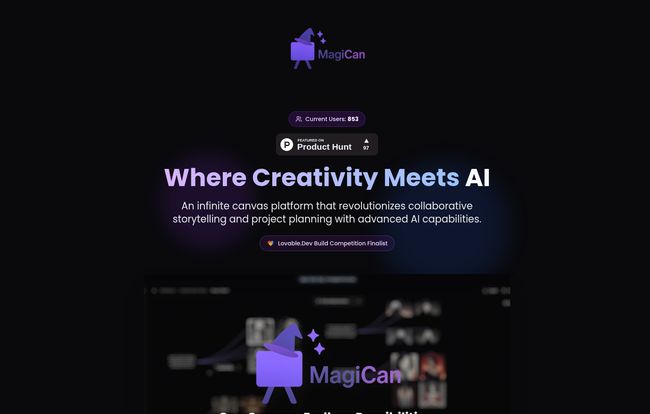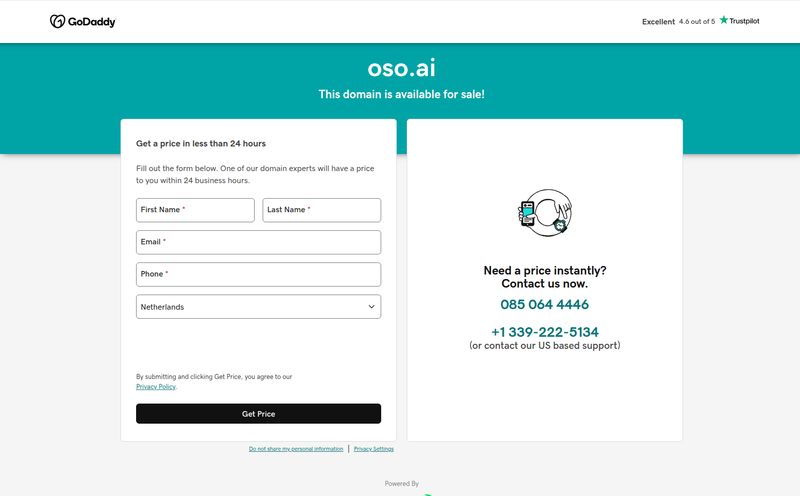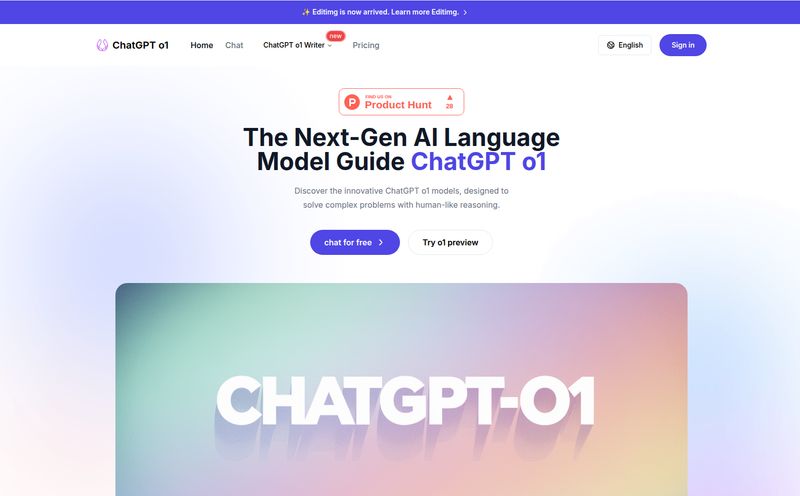The creative process is a mess. My desk, at any given moment, is usually a chaotic landscape of sticky notes, a whiteboard covered in scribbles that only I can decipher, and about seventeen different Google Docs, each one a slightly different version of the same idea. It’s organized chaos, but it’s still chaos. For years, we’ve been trying to find that one perfect tool to bring it all together. You know the one—visual, flexible, and smart enough to keep up.
Every so often, a new tool pops up on my radar that makes me sit up and pay attention. Recently, that tool has been MagiCan. It’s been making the rounds, even showing up as a finalist on Product Hunt, and the premise is tantalizing: an infinite canvas where creativity meets AI. It's not just another digital whiteboard; it’s a space where you can supposedly brainstorm, generate assets, and map out entire projects without ever leaving the platform.
In a world drowning in AI wrappers and half-baked “solutions,” I’m naturally skeptical. Does MagiCan actually streamline a creator's workflow, or is it just another shiny object? I decided to sign up, kick the tires, and give you the real, no-fluff rundown. So, grab a coffee and let's see if this thing is magic or just a clever illusion.
So, What on Earth is MagiCan Anyway?
Think of it like this: imagine if a visual collaboration tool like Miro or FigJam had a baby with a whole suite of generative AI assistants. That baby would be MagiCan. At its core, it’s an infinite canvas—a limitless digital space where you can throw ideas, images, text, and diagrams without worrying about running out of room. It breaks you out of the rigid, A4-sized prison of traditional documents.
But the real secret sauce is the integrated AI. It’s not just for generating cat pictures (though you totally could). MagiCan is designed for structured creation. It can help you generate flow maps from a simple prompt, write copy, create images for a mood board, and even turn text into audio. It’s aiming to be an all-in-one hub for anyone who tells stories or manages complex projects—from marketers and YouTubers to UX designers and agency teams.

Visit MagiCan
My First Impressions and The Core Features
Getting started was a breeze. The usual suspects are there: sign up with Google or a standard email/password combo. No hoops to jump through. Once inside, the interface feels clean, if a little sparse, which I actually appreciate. It doesn't overwhelm you with a thousand buttons.
Here’s what stood out as I started to play around.
The Infinite Canvas is a Breath of Fresh Air
I can't overstate how much I love a good infinite canvas. The ability to just zoom out and see an entire campaign, from initial brainstorm to final storyboard, all in one place is just… freeing. It mirrors how my brain works: non-linearly. You can create a mind map in one corner, build out a user flow in another, and drop a gallery of inspirational images somewhere else. It's a digital sandbox for your thoughts.
The AI Magic Wand
This is obviously the main event. MagiCan bakes AI directly into your workflow. Instead of having to open another tab for ChatGPT or Midjourney, you can do it all right there on the canvas. The platform offers a few different flavors of AI creation:
- Flow Maps: This is seriously cool. You can type in a prompt like, "Create a workflow for launching a new podcast," and MagiCan will generate a structured flowchart. It’s not always perfect, but as a starting point? It saves a ton of time.
- Image Generation: The text-to-image feature is pretty standard fare for AI tools these days, but its integration here is what matters. You can instantly create concept art for a character, mock up a social media graphic, or generate a background texture without breaking your creative flow.
- Text and Audio: The platform can also generate written content and even turn text into a voiceover. The audio part feels a bit niche, but I could see it being incredibly useful for animators creating rough cuts or for content creators needing quick voiceovers for short-form video.
This all-in-one approach is what separates MagiCan from its competitors. It’s not just a place to organize ideas; it’s a place to create them.
Collaboration That Doesn’t Make You Want to Scream
Real-time collaboration is table stakes in 2024, and MagiCan delivers. You can invite team members to your canvas and see their cursors moving around, just like in Google Docs or Figma. What’s important here are the permissions. You can share a canvas as view-only (perfect for client presentations) or give full edit access for those all-hands-on-deck brainstorming sessions. It’s simple, effective, and works as you’d expect. No complaints here.
Putting MagiCan To The Test with a Real-World Scenario
Okay, theory is nice, but how does it hold up in practice? I decided to map out a fictional Q3 content marketing campaign for a SaaS company.
First, I used the AI to generate a flow map for "a content campaign promoting a new project management feature." It spat out a decent-looking diagram with stages like 'Ideation,' 'Content Creation,' 'Promotion,' and 'Analysis.' From there, I started populating the 'Ideation' section with virtual sticky notes for blog post ideas. One of them was "10 Ways Our New Feature Crushes Asana."
Next, I jumped over to the AI image generator. I typed in a prompt:
A vibrant, abstract image representing productivity and teamwork, minimalist style, blue and green tones.
A few seconds later, I had a handful of options. I dragged my favorite onto the canvas to serve as the mood board's centerpiece. Then I used teh AI text generator to write a few sample tweets for the promotion phase.
The whole experience felt surprisingly fluid. I wasn’t context-switching between five different apps. I was building the entire campaign strategy, complete with visual concepts and copy, in one continuous flow. The version management feature also gave me peace of mind. Knowing I could roll back to an earlier version if an idea went off the rails is a subtle but powerful feature.
The Good, The Bad, and The Beta
No tool is perfect, especially not a new one. After spending a good few hours with MagiCan, here’s my honest breakdown.
What I Genuinely Liked
The biggest pro is the seamless integration of AI and a visual canvas. It feels less like a feature and more like the entire point of the platform. The free plan is also quite generous, giving you enough runway to actually decide if the tool is right for you before pulling out your credit card. For visual thinkers, this tool just clicks.
Where It Gets a Bit Wobbly
Let's be real for a second. The platform is new, and it sometimes feels like it. The site mentions it's a finalist in a 'Dev.Build Competition,' which tells me it's still in its early growth phase. You might run into the occasional bug or a feature that doesn't feel fully polished. This is the nature of using a tool that's still in beta or close to it. If you need something 100% stable for a mission-critical, enterprise-level project with a tight deadline, you might want to wait a bit. Also, those 150 AI credits on the free plan can disappear fast, especially if you’re generating a lot of images. It's more of a sampler than an all-you-can-eat buffet.
Let's Talk Money: MagiCan Pricing Plans
Pricing is always a huge factor, so let’s break it down. MagiCan keeps things refreshingly simple with two main tiers.
| Plan | Price | Key Features |
|---|---|---|
| Free Plan | $0 / month | 150 monthly AI credits, 2 projects limit, 2 canvases per project, View-only sharing |
| Premium Plan | $15 / month | 1,500 monthly AI credits, Unlimited projects & canvases, Collaborative sharing with edit permissions, Priority support |
A quick note: I saw the Premium plan listed at $9/month in some documentation, but the main pricing page on the site currently says $15/month. This kind of fluctuation is normal for a newer company finding its footing, but be sure to check the official pricing page for the latest numbers.
Is it worth it? For a solo creator or student, the free plan is fantastic for getting your feet wet. For small teams, freelancers, or agencies who live and breathe this kind of visual planning, the Premium plan at $15/month seems like a pretty solid deal. If it saves you even a few hours of work each month, it's already paid for itself.
FAQ: Your MagiCan Questions Answered
- Is MagiCan a good replacement for Miro or Mural?
- It could be, but it depends on your needs. If you lean heavily on advanced whiteboarding features and a massive template library, Miro might still have the edge. But if the main draw for you is having AI generation capabilities built directly into your canvas, MagiCan presents a very compelling alternative.
- How are the AI credits used?
- Each AI-powered action consumes credits. The image on their homepage suggests a text generation might cost 1 credit, an audio generation 5 credits, and a video generation 30 credits. The 1,500 credits on the Premium plan should be plenty for most users' monthly workflow.
- Can I export my work from MagiCan?
- Yes! The platform features 'Instant Export', allowing you to get your creations out of MagiCan and into presentations, documents, or other formats. This is crucial for integrating it into a wider workflow.
- Is MagiCan difficult to learn?
- Not at all. If you've ever used any kind of visual collaboration tool or even a simple design program, you'll feel right at home. The interface is intuitive, and the main features are easy to find and use.
- Who is the ideal user for MagiCan?
- I'd say the sweet spot is for creative professionals: marketing teams, content creators, UX/UI designers, writers, and project managers who prefer a visual approach to planning. If your work starts on a whiteboard, you'll probably love this.
- Is my data safe on MagiCan?
- Like any cloud-based tool, you're trusting them with your data. They have a standard Terms of Service and Privacy Policy you can review during signup. For highly sensitive corporate information, you should always perform your own due diligence, but for general creative and project work, it aligns with industry standards.
Final Thoughts: So, Is MagiCan a Keeper?
After spending some quality time with MagiCan, I’m walking away genuinely impressed. It’s more than just another AI tool; it’s a well-thought-out platform that understands how creative people think and work. It successfully merges the freeform, visual nature of a whiteboard with the powerful, time-saving capabilities of modern AI.
Yes, it has a few of those 'new tool' rough edges. It's a work in progress. But the foundation is incredibly strong. It’s not trying to replace every tool in your stack, but it makes a very strong case for becoming your primary space for ideation and creative project planning.
I’ve added MagiCan to my personal toolbox, and I’m excited to watch it grow. If you're tired of juggling a dozen different apps to bring an idea to life, I’d say it is absolutely worth giving the free plan a spin. It just might be the creative playground you've been looking for.
Reference and Sources
- MagiCan Official Website: https://magican.co/
- MagiCan Official Pricing Page: https://magican.co/pricing



